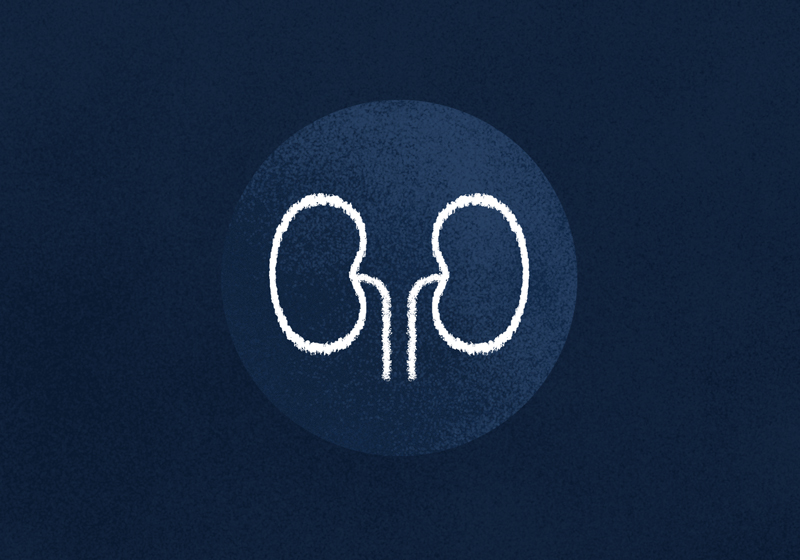Kidney stones

How do kidney stones develop?
A kidney stone can form when high levels of certain substances (calcium, oxalate, cystine, or uric acid) are present in the urine. Stones can also form when these substances are at normal levels, especially if you are not making a lot of urine (e.g.:, not drinking enough fluids). The substances form tiny crystals, which gradually increase in size, forming a kidney stone. A stone can remain in the kidney for years or decades without causing any symptoms or damage to the kidney.
Certain diseases, dietary habits, or medications can increase your risk of developing kidney stones. Once you have had a kidney stone, you are at an increased risk of getting another one in the future. A family history of kidney stones may also increase your risk.
A stone may move through the urinary tract and get passed out of the body in the urine. The passage of a stone may cause pain if it becomes stuck and blocks the flow of urine. Large stones do not always pass on their own and sometimes require a minimally invasive procedure to remove them.
Kidney stone symptoms
Pain — Pain is the most common symptom when passing a kidney stone. Pain can range from a mild ache to a discomfort that is so intense it requires going to the hospital. Pain can occur in the flank (the side, between the ribs and the hip) or the groin.
Blood in the urine — Most people with kidney stones will have blood in the urine; the medical term for this is “haematuria.” The urine may appear pink or reddish, or the blood may not be visible until a urine sample is examined under a microscope.
Other symptoms — Other kidney stone symptoms may include nausea or vomiting, pain with urination, and a frequent or urgent need to urinate.
Kidney stone treatment
Treatment of a kidney stone depends on the stone’s location, size as well as the severity of your symptoms. If you have a small stone that is likely to spontaneously pass and causing mild symptoms only, you may not require anything other than time and possibly a medication (tamsulosin) to assist passage.
If you have a larger stone (usually >5-6mm) that is unlikely to pass, causing more severe symptoms or affecting kidney function, you may require a tailored surgical treatment.
Shock wave lithotripsy (ESWL)
Lithotripsy, also known as extracorporeal shock wave lithotripsy (ESWL), is a non-invasive procedure used to break up kidney stones into smaller pieces that can be passed out of the body through urine. During the procedure, the patient lies on a table while a machine delivers shock waves to the kidney stone to break it up.
Lithotripsy is typically performed under general anaesthesia and can be done as a day procedure. Recovery time is usually a few days. Complications may include bleeding, pain, and blockage of the urinary tract with larger fragments requiring a further procedure.
Ureteroscopy with laser
Ureteroscopy is a minimally invasive procedure used to treat smaller stones in the kidney and ureter, the tube that connects the kidney to the bladder. During the procedure, the surgeon inserts a thin, flexible tube with a camera through your urethra and bladder into your ureter.
The camera allows the surgeon to locate the stone and remove it using a small basket or laser. Ureteroscopy is typically performed under general anaesthesia and can often be done as a day case. Recovery time is usually a few days. Complications may include bleeding, infection, and damage to the ureter.
Percutaneous Nephrolithotomy (PCNL)
PCNL is a minimally invasive surgical procedure used to remove larger kidney stones. During the procedure, the surgeon makes a small incision in your back to access your kidney. Dr Sethi does this with the patient lying flat (supine) without the need to go face down (prone).
A small telescope called a nephroscope is inserted through the incision to locate and remove the stone. PCNL is usually performed under general anaesthesia and typically requires a hospital stay of 2-3 days. Recovery time varies depending on the size of the stone and the complexity of the surgery but narrower instruments may allow a quicker return to normal function (mini PCNL). Complications may include bleeding, infection, and damage to surrounding tissue.
Ureteric Stent and Stent Symptoms
A ureteric stent is a small tube inserted into the ureter to help urine flow from the kidney to the bladder. This may be necessary after a ureteroscopy or PCNL procedure to help the ureter stay open and prevent blockages and pain. The stent is usually removed 1-2 weeks after the procedure.
Symptoms associated with a ureteric stent include discomfort or pain in the lower back or groin, urinary urgency or frequency, and blood in the urine. These symptoms are usually mild and resolve after the stent is removed, but in some cases, they can be severe and require early removal.